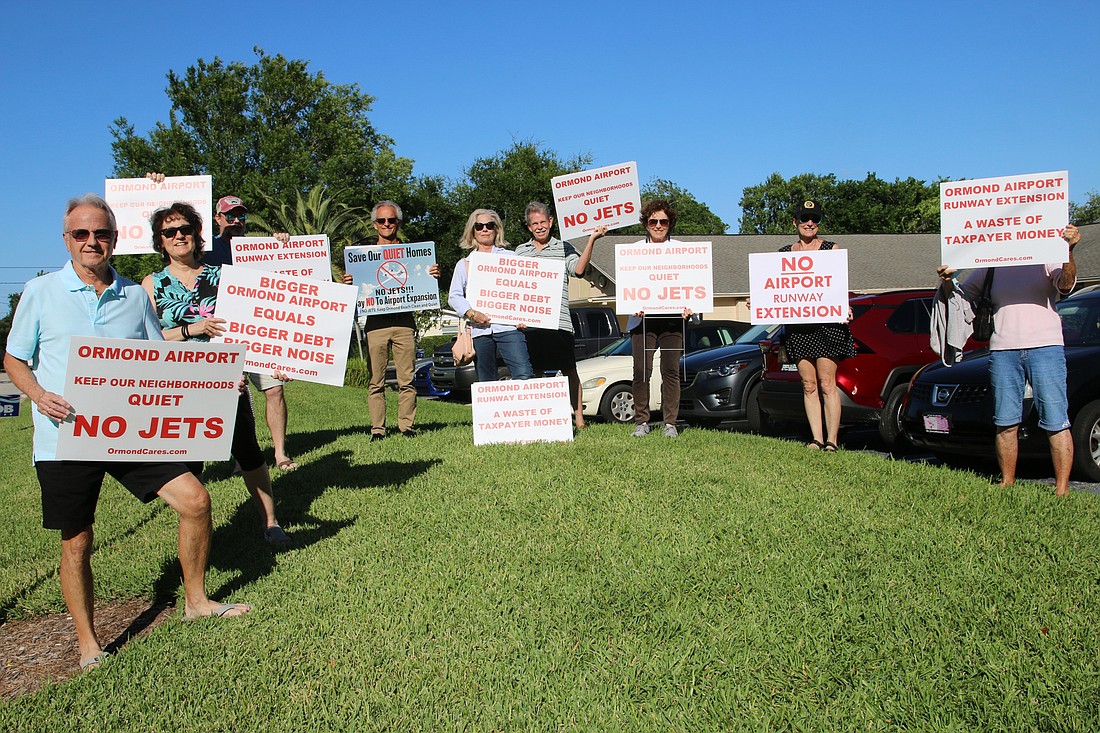- December 15, 2025

When it comes to the Ormond Beach Municipal Airport and the proposed 600-foot runway extension to the west, the community is divided.
Some believe that the runway extension will only increase noise in their neighborhoods. Others want the extension, on the basis that the airport is an economic driver.
At the city’s OB Life citizen engagement workshop on the topic held on Tuesday, May 10, at the Ormond Beach Senior Center, the estimated 140 people in attendance represented both views. While there was a virtual option to attend, residents reported they encountered technical difficulties.
It was, at times, a tense meeting, with one resident being escorted out by police after he stood up and spoke against the runway, earning boisterous applause.
“Most of the residents here are concerned about the noise that this airport is going to bring up,” the man shouted. “You’re completely ignoring the issue.”
The city’s standpoint regarding noise is that a longer runway would allow planes to gain altitude quicker and therefore reduce noise when flying over nearby neighborhoods, such as Bear Creek. Some residents are not convinced.
Likewise, when one person submitted a question asking why people complain about noise after moving next to an airport, a loud applause also rang through the room.
Brian Rademacher, the city’s economic development director, said that the airport had 105,170 operations in 2021, showing a graph with a downward trend since the height of about 164,000 operations in 2008. One takeoff or one landing count as one operation.
But despite having less operations, Rademacher said that the airport contributes to a regional employment of 426 jobs, a total payroll of about $18 million and and a total regional output of $56 million, per data by the Florida Department of Transportation.
During the question and answer portion of the meeting, one resident asked about the need for the Ormond airport when there are ones in Flagler Beach and Daytona Beach. City Airport Manager Steven Lichliter said airports don’t compete with each other. General aviation airports, like Ormond Beach, provide service to smaller aircraft so that the larger airports are able to better serve commercial carriers.
“Can you imagine flying out of Daytona Beach ... but you were waiting behind 25 Cessna 172s waiting to takeoff to do flight training?” Lichliter said. “... That’s why there are general aviation airports.”
One of the major points of contention regarding the runway extension project involves the number of jets that could utilize the airport in the future. The three jets based at the airport counted for 0.2% of the annual operations at the airport , with the majority — 93.9% — coming from its single-engine planes. The Ormond Beach airport is primarily a flight training facility.
The city brought in two representatives from Environmental Science Associates, an Orlando-based environmental consulting firm, to provide a broader context on the airport and its operations.
ESA National Airports Practice Leader Michael Arnold said that the public should expect, if the project is completed, to see about 2-3 more operations per day, and that the reduction of the runway extension from 1,000 feet to 600 feet would keep the runway protection zone on airport property, minimizing impacts to nearby parcels.
City Finance Director Kelly McGuire also spoke about the airport fund, explaining that it is a separate financial entity and that it is supported from land and hangar leases. These lease revenue funds take care of operating expenses, such as salaries, maintenance and utilities. The city has borrowed $668,000 internally from its general fund to provide local match dollars for grants by the Federal Aviation Administration and FDOT. For every $1 of matching funds, McGuire said the city receives $22 in grant funds, which in turn become a $750 economic benefit.
Annually, the airport fund pays the city back as much as it can from its leases, and pays interest, she added.